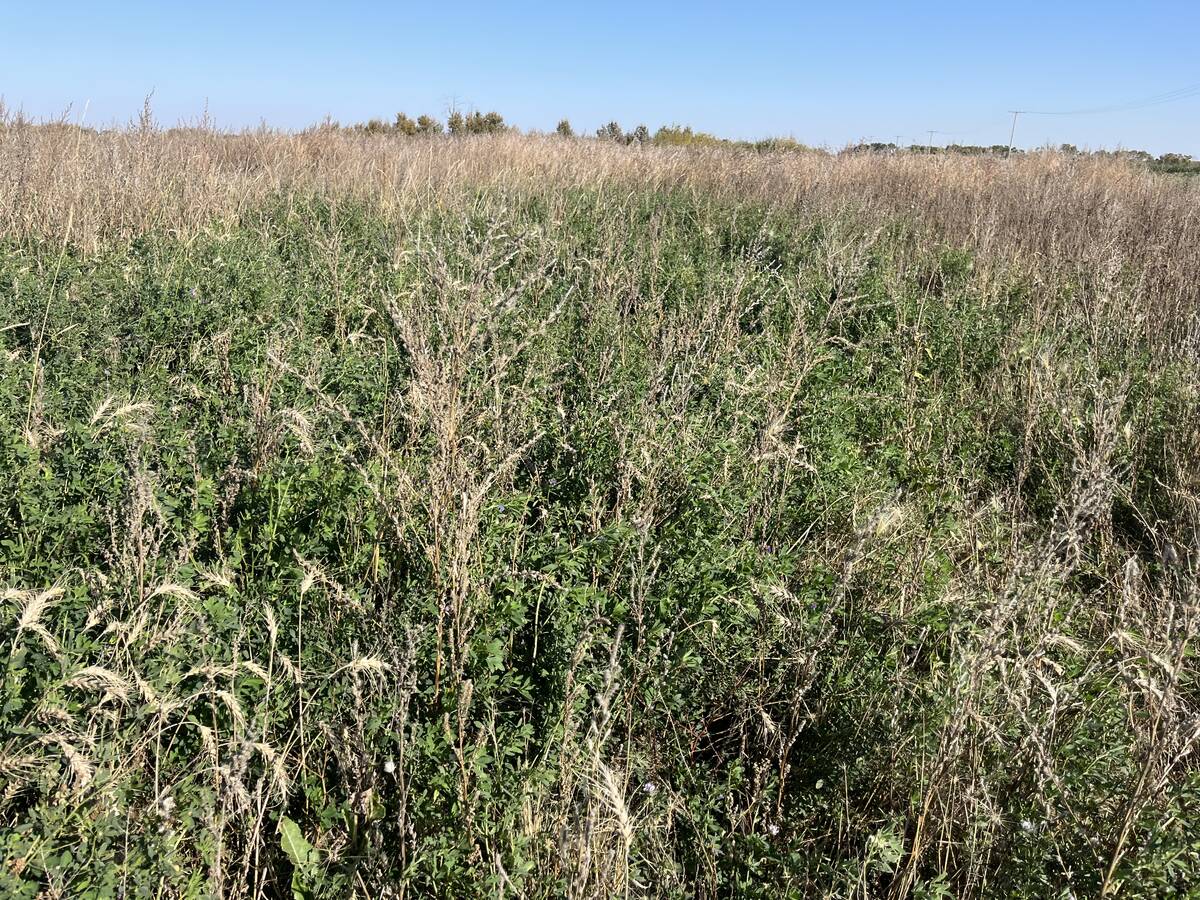I’ve chatted with several veterinarians over the last few weeks who were working with cow-calf herds suffering through a cryptosporidiosis outbreak causing diarrhea in young calves.
All the situations were slightly different, however, the clinical presentation and the challenges with dealing with these outbreaks were remarkably similar.
Cryptosporidium parvum, commonly known as “crypto” is a microscopic parasite, (a single-celled protozoan organism) that can cause diarrhea in humans and animals. There are many species of cryptosporidium parasites. Cryptosporidium parvum infects mammals including cattle, sheep goats, pigs, horses, wildlife and humans. Within this species, there are also subspecies that may be specific to humans or restricted to cattle.
Read Also

Dormant seeding forages frees up farmer time and gets ahead of weeds
Dormant seeding isn’t common practice and can appear daunting, but there are some techniques to give Manitoba farmers an edge
Cryptosporidium is similar to coccidia, however, unlike coccidiosis, crypto is a zoonosis and can be a cause of disease in people that are working with calves. One veterinarian dealing with the recent outbreaks noted they had staff at their clinic who were sick, probably because of handling these calves.
Cryptosporidiosis has been identified as a common cause of neonatal diarrhea in young dairy calves and it is sometimes overlooked as a potential cause of diarrhea in young beef calves. Most producers are aware of coccidiosis as a parasitic cause of diarrhea in beef calves, although cryptosporidium is sometimes not as well known.
A United States Department of Agriculture National Animal Health Monitoring System study collected samples from diarrheic beef calves from 69 different operations as well as samples from beef calves without diarrhea from another 141 operations.
About 20 percent of the calves with diarrhea were positive for cryptosporidium and 11.2 percent of the non-diarrheic calves were positive. This study showed that cryptosporidium is not just a disease of dairy calves. It is common on beef cow-calf farms and is something that producers should know.
The study also showed that younger calves are more likely to shed cryptosporidium than older calves. We know from other studies that many calves with diarrhea may have mixed infections that include both viruses and cryptosporidium together.
Calves are often infected early in life and a high proportion can shed the parasite in their feces by the second week of life. The most common clinical sign is a mild to moderate diarrhea at five to 15 days of age, although cases can occur up to 30 days of age.
The duration of diarrhea is a little longer than is typically seen in calves that are infected with viral or bacterial causes of diarrhea. It rarely causes severe dehydration and collapse, although calves may lose weight and can become significantly dehydrated.
Crypto is often involved along with other viruses and calves may have a mixed infection, making their diarrhea more severe. In a number of the outbreaks that I’ve been involved with, the veterinarians and producers involved had to be prompt in giving intravenous fluids to calves infected with both cryptosporidia and various viruses, to keep them alive once they developed clinical signs of diarrhea.
One research study published in 2019 by researchers in the United Kingdom demonstrated longer-term effects of cryptosporidium infections. They followed beef calves on one farm that had recovered from severe cryptosporidiosis and compared them to calves that showed no clinical signs of infection. They followed the calves until they reached six months of age.
The calves that had been affected with more severe disease weighed 34 kg less at six months of age, demonstrating that a severe cryptosporidia infection had a long-term effect on the productivity of these calves, presumably through damage to the intestinal wall.
Unfortunately, cryptosporidiosis is difficult to control because the parasite is highly infectious and it is also capable of long survival times in the environment.
We also have few effective treatment options for infected calves. It is not destroyed easily by freezing or drying and it is resistant to many disinfectants. This makes it exceptionally difficult to control in dairy or beef operations once the premises are infected.
Reducing the number of oocysts ingested by calves will probably reduce the severity of the disease. Calves with diarrhea should be isolated from healthy calves and kept separate for several days after recovery.
The basic principles of reducing the infection pressure by maintaining a clean calving area, spreading cow-calf pairs out and using separate turn-out areas or some form of calving system that minimizes environmental infections is important in preventing the disease, just as it is in all causes of scours outbreaks.
Ensuring calves get adequate colostrum is critical, as it is for almost all young calf diseases.
Many of the biosecurity strategies we apply to viral or bacterial calf scours are applicable to minimizing the effect of cryptosporidiosis.
John Campbell is a professor in the department of Large Animal Clinical Sciences at the University of Saskatchewan’s Western College of Veterinary Medicine.















